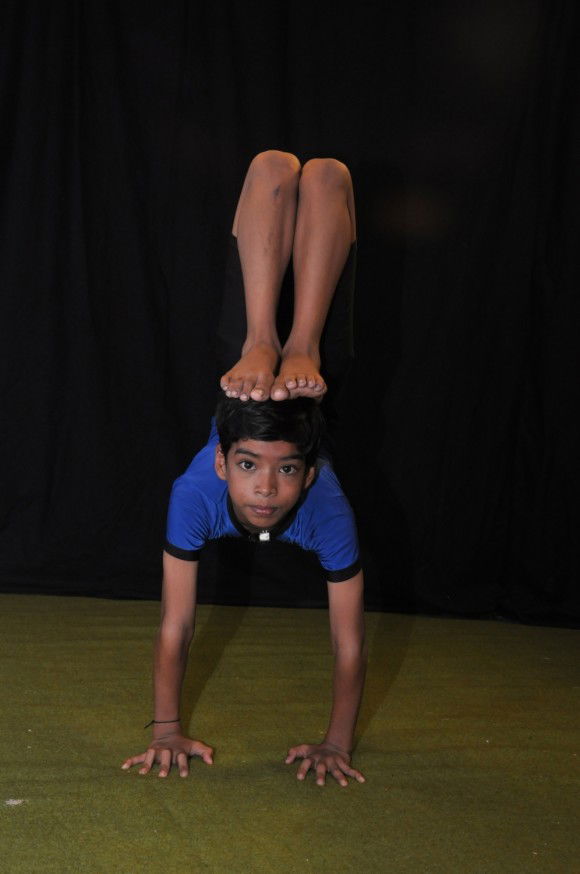Articles features
Man who popularised yoga in America died with India on his lips (Comment) (June 21 is International Yoga Day)

On June 21, when the world celebrates the International Yoga Day for a second year in running, yoga enthusiasts around the world must remember Paramhansa Yogananda, who did more than anyone else to take the ancient science beyond India's shores.
If the UN decided to honour June 21 every year as the yoga day, the primary credit for this must go to Yogananda, who went to the US in 1920 and taught yoga and meditation for over three decades to many thousands of Americans at a time when yoga was a strange word.
Yogananda returned to India on a short visit just once - when he taught Kriya Yoga to Mahatma Gandhi at Wardha. He went back to the US at the urging of his guru, passing away there in 1952 under unique circumstances.
It was in 1946 that Yogananda published his path-breaking "Autobiography of a Yogi". In no time, it was recognised as one of the 10 best spiritual classics of the 20th century. No other book perhaps has done more to propagate yoga and spirituality. It has been translated into 21 languages and sold millions of copies.
This year marks the 70th anniversary of "Autobiography of a Yogi" - which continues to be a best seller in the spiritual category and has pushed millions on the spiritual path around the world.
Yogananda was born into a spiritually inclined family on January 5, 1893 in Gorakhpur (Uttar Pradesh) as Mukunda Lal Ghosh. He was the fourth of eight children and showed an early inclination for the self-realization path. His guru, Yukteswar Giri, goaded him to graduate and later ordained him as Yogananda. "Some day you will go the West. Its people will lend ears more receptive to India's ancient wisdom if the strange Hindu teacher has a university degree," was the guru's counsel.
Three years after founding the Yogada Satsanga Society of India (YSS) in Ranchi in 1917, the young Yogananda sailed to Boston to take part in the International Congress of Religions. His mission was to unite the East and West by spiritual understanding, to show the underlying unity of all religions. He travelled extensively in the US and captivated millions with his talks on yoga and meditation -- thus laying the foundations of yoga in the West that has today catapulted into the International Yoga Day.
Yogananda was not ritualistic. He spoke secular language and never imposed his ideas on others. In the US, he underlined the spiritual and cultural heritage of India and held classes on balanced living -- using yoga as a medium. Finally, however, it was the "Autobiography of a Yogi" that put Yogananda on a spiritual pedestal where he remains even today.
On March 7, 1952, at an event at Biltmore Hotel at Los Angeles attended by India's ambassador to the US, Yogananda gave what turned out to be his last talk - and hugely memorable. "I am proud that I was born in India," said the ochre-robed swami with flowing hair. "I am proud that we have a great ambassador representing my spiritual India. I am very proud today."
And after reading out a few lines from his poem "My India", Yogananda slid to the floor, a beatific smile on his face. He had passed away. The stunned Indian ambassador, Binay R. Sen, who saw Yogananda's final moments, paid rich tributes: "He was born in India, he lived for India, and he died with the name of India on his lips."
The Indian government issued a postage stamp in his honour way back in March 1977. Unfortunately, unlike Swami Vivekananda, Yogananda doesn't figure in schoolbooks the way he deserves to. Prime Minister Modi must pay his homage to this great yoga guru on June 21.

38 seconds ago
US to cut flight operations by 10 per cent as government shutdown hits air travel

3 minutes ago
Delay in South Korea-US summit fact sheet suggests prolonged coordination on Washington's end

5 minutes ago
Trump’s global tariffs face tough scrutiny at US Supreme Court

16 minutes ago
100 5G labs set up across India to boost 6G research ecosystem: Govt

18 minutes ago
Centre throws open booth bookings for startups in 'Waves Bazaar' at IFFI Goa 2025

19 minutes ago
AI tops workplace priorities in India, surpasses pay and burnout issues: Report

20 minutes ago
India's solar module manufacturing capacity set to touch 165 GW by March 2027

22 minutes ago
Science, R&D, advanced materials key pillars for Viksit Bharat 2047: CSIR

23 minutes ago
2025 dengue death toll in Bangladesh crosses 300 with 10 new fatalities

24 minutes ago
Upcoming super speciality hospital to boost Tripura’s healthcare infrastructure: CM Saha

26 minutes ago
Man dies of 'delay' in angioplasty at Thiruvananthapuram Medical College

44 minutes ago
Champions League: Foden inspires Man City to ease past Dortmund

45 minutes ago
Anisimova dispatches Swiatek to reach semifinals at WTA Finals






















